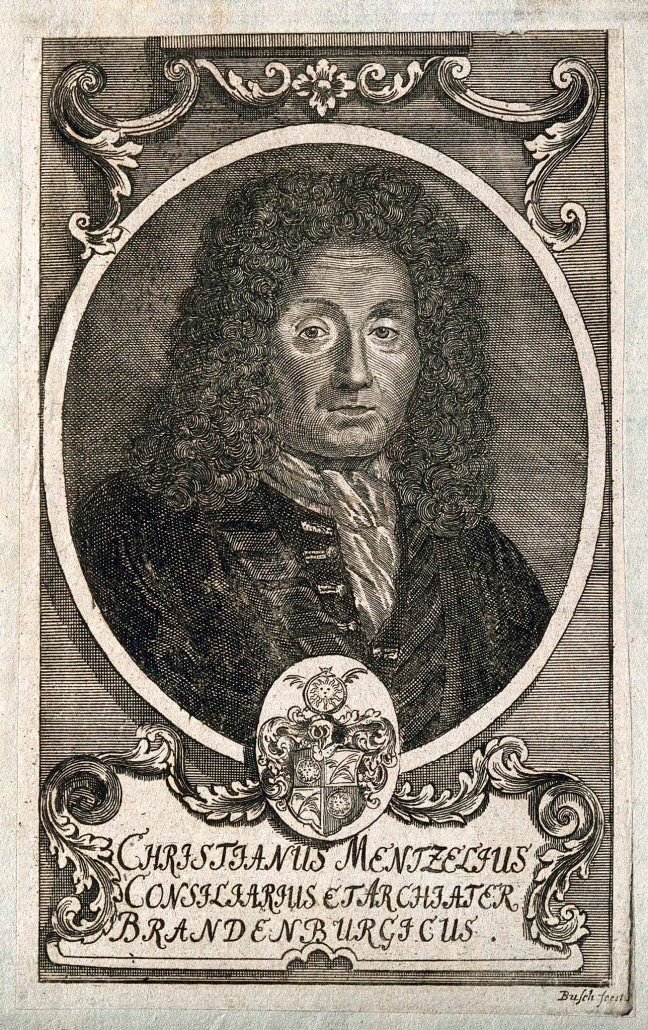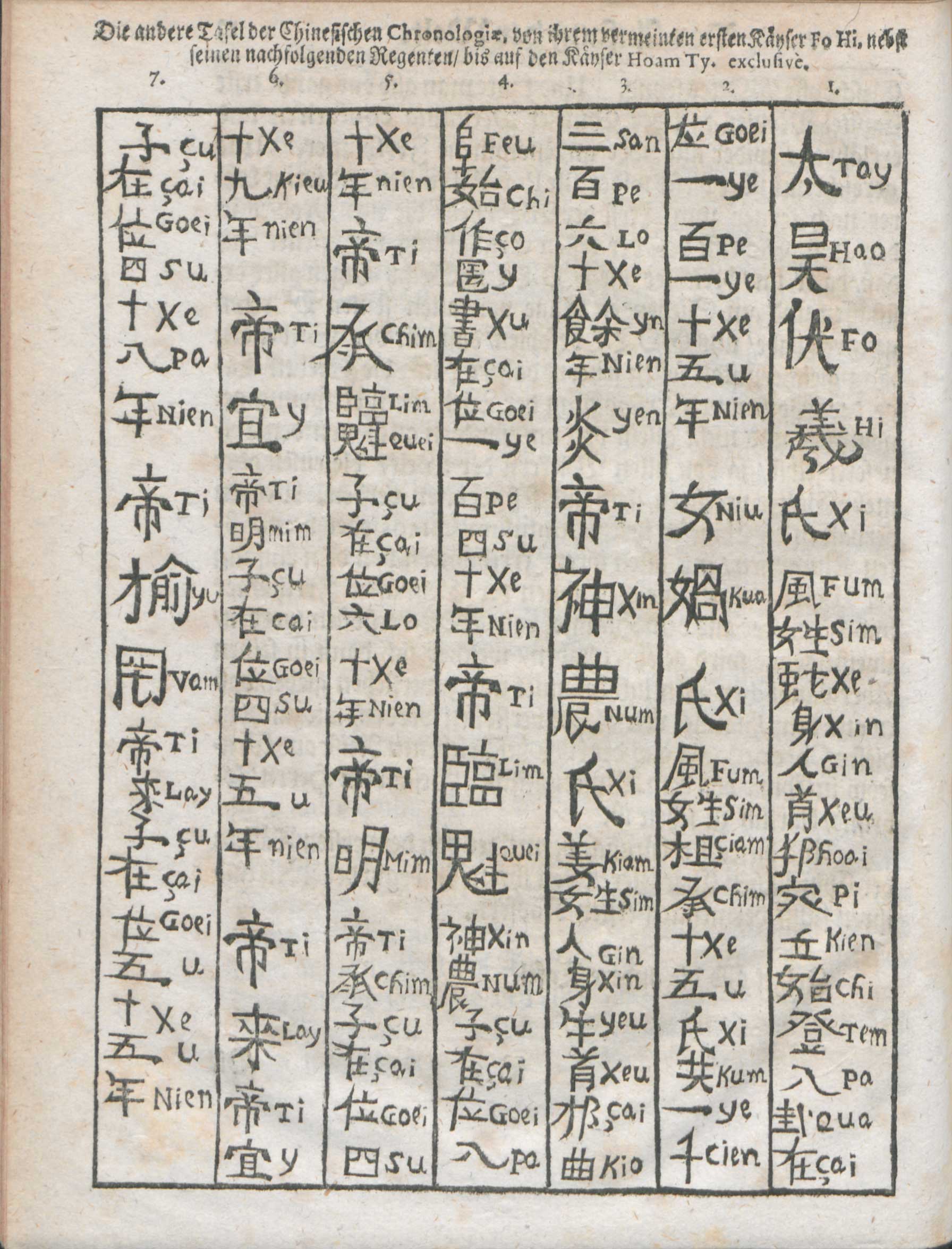1
The role of the personal physician Christian Mentzel
The Great Elector and China
Attributed to Christian Mentzel: Portrait of the Great Elector with Chinese characters, Berlin, 1685. digital copy
This portrait of the Elector of Brandenburg, Friedrich Wilhelm, has been attributed to Christian Mentzel (1622–1701). The inscription around the portrait according to the translation by the sinologist Bertold Laufer (1874–1934) reads as follows: “1685 Anno Domini (bottom); in the 45th year of Brandenburg (left); portrait of the Great Elector, the warrior (top); the immensely wise Elector Pingsi [possibly for Friedrich Wilhelm; 平ping = freedom (in German: Frieden) = Fried-rich], the warrior, the emperor (right)”.
Portrait of the Great Elector with Chinese caption
Christian Mentzel: physician, botanist, sinologist
Christian Mentzel, who presumable created the portrait, studied medicine in Frankfurt an der Oder and in Königsberg. After extensive travelling and a prolonged stay in Italy, he decided to settle in Berlin. Mentzel’s medical achievements caught the attention of the Great Elector, who appointed him electoral advisor and personal physician in 1660.
In addition to practicing medicine, Mentzel also took an interest in botany and devoted himself to the study of foreign languages. He was in correspondence with numerous scholars in and outside of Germany. For example, there was the merchant, botanist, and physician Andreas Cleyer from Kassel, who also took an interest in Japanese studies and who spent most of his time in Batavia and Nagasaki in the second half of the 17th century, and the botanist Eberhard Rumpf from Hanau, who lived on the island of Ambon (Moluccas, Dutch Indies). Both were representatives of the Dutch East India Company.
Georg Paul Busch (–1756): Portrait of Christian Mentzel. Wellcome Library no. 6471i
The Chinese book collection of the Elector
Christian Mentzel: Kurtze Chinesische Chronologia oder Zeit-Register Aller Chinesischen Käyser, Berlin, 1696. digital copy
The Elector Friedrich Wilhelm also planned to establish an East India trading company in Berlin. Due to the connections of his father-in-law Friedrich Heinrich, Prince of Orange, he was able to meet the Dutch Admiral Arnold Gijsels van Lier (1593–1676). At the age of only 16, van Lier served in the East India Company and in 1618 he was appointed Commander of Ambon Island. He was to advise the Elector on his plans for the colonies.
In 1670, Friedrich Wilhelm negotiated a price for Van Lier’s Chinese books. Later he made even more purchases, both directly from the Netherlands and from the collection of the orientalist Christian Raue (1613–1677). Christian Mentzel, who showed a great deal of interest in the Chinese language, made an outstanding contribution to the Chinese book collection of the Great Elector. As a result, he was appointed curator of the collection from 1685 to 1692.
The portrait was first published in the Berliner Kalender in 1903. The calendar included a copy from the Kupferstichkabinett of the Königliche Museum (Royal Museum of Prints and Drawings) in Berlin, which was subsequently lost during the war. Today, two copies of the portrait can be found in the East Asia Department of the Staatsbibliothek in Berlin.




